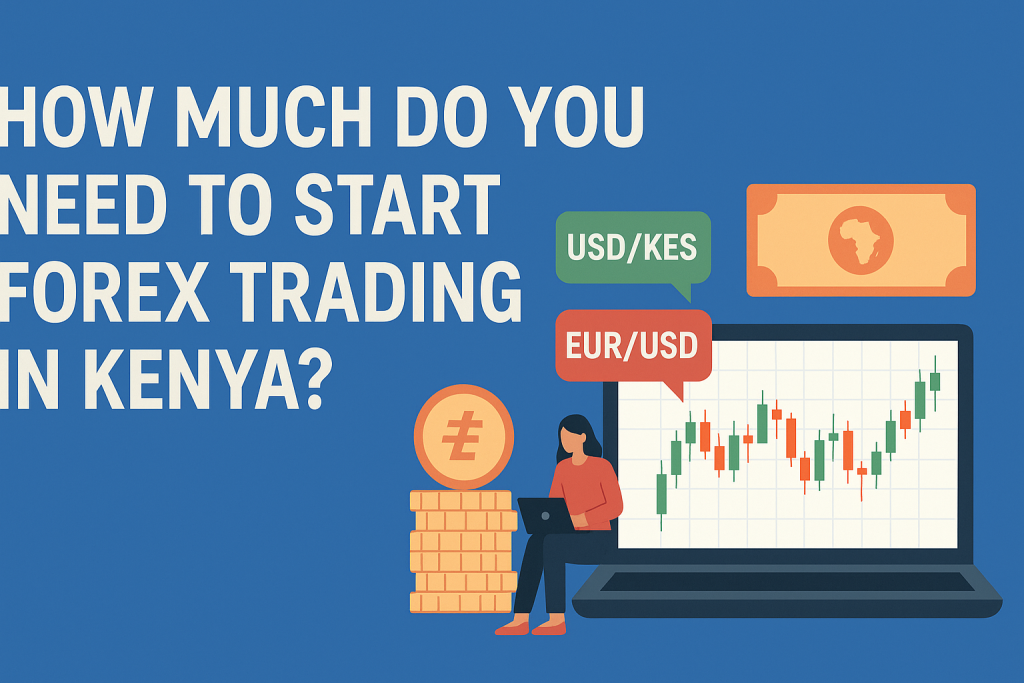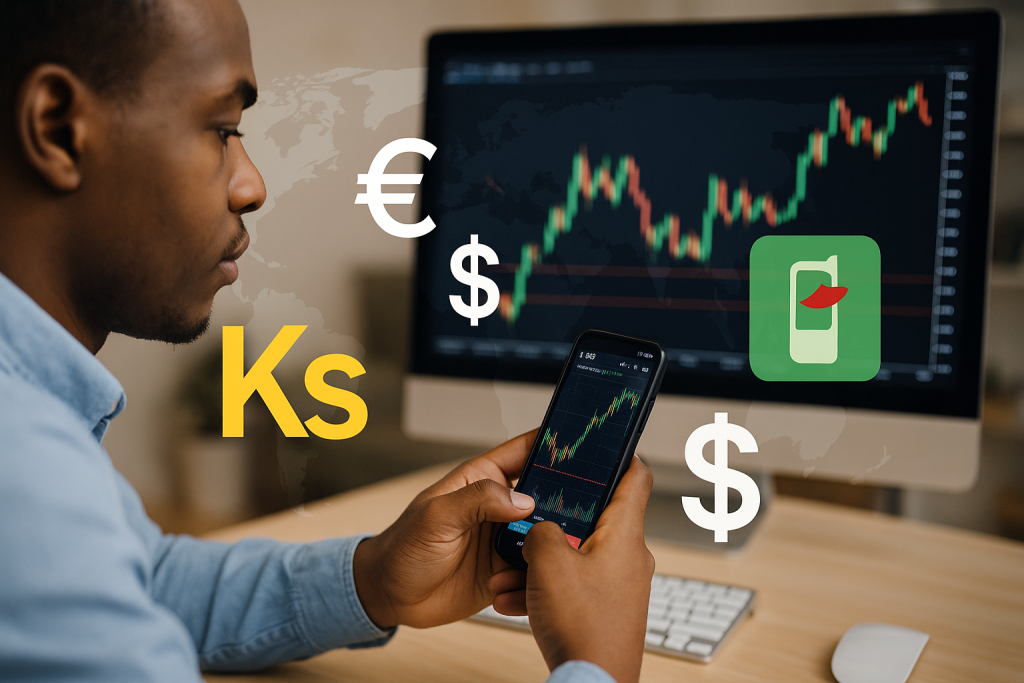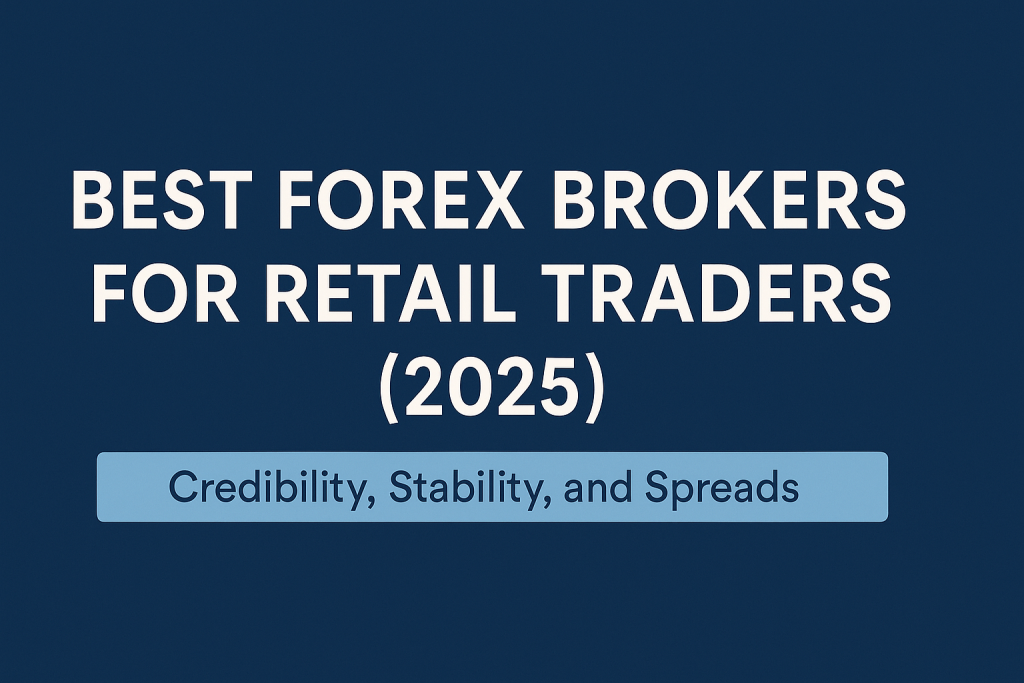Forex trading can be a tempting avenue for earning money, especially given the rise of online brokers and mobile money options like M-Pesa in Kenya. But before you jump in, it’s vital to understand not just the minimum amount to start, but also how much you should realistically have, what risks you’re taking, and how the regulatory & practical landscape works in Kenya.
This blog post will walk you through:
- The regulatory framework in Kenya
- What “minimum deposit” means in practice
- A realistic breakdown of how much you should have to trade with a chance of success
- The risks involved and how to mitigate them
- A step-by-step plan for starting out
Let’s dive in.
Is Forex Trading Legal & Regulated in Kenya?
Before discussing money, it’s necessary to clarify the legal and regulatory status in Kenya — because that affects how much risk you’re taking.
Legal Status
Yes, forex trading is legal in Kenya. You can open a forex account and trade currency pairs via authorized brokers. However, legality alone isn’t the whole story — being regulated is important.
Regulation
In Kenya, the Capital Markets Authority (CMA) is the regulator that oversees online foreign exchange trading.
The relevant legal instrument is the Capital Markets (Online Foreign Exchange Trading) Regulations, 2017.
The CMA publishes a list of licensed brokers.
Operating via a broker that is not licensed by the CMA means you may not have the same protections; the CMA has warned against unlicensed entities.
Why This Matters
If you trade via an unregulated broker, you face risks such as difficulty withdrawing funds, lack of fund segregation, and fewer protections if the broker goes bust or behaves badly. So before you decide how much you need, insist on using a broker that is regulated in Kenya (or at least one with strong international regulation and local payment support).
Bottom line: Forex trading is legal and regulated by the CMA — but you must choose your broker carefully.
What Is the Minimum Deposit to Start?
When people ask “how much do I need to start,” they often refer to the minimum deposit required by a broker. Let’s look at what that means in the Kenyan context.
What Brokers Offer
- Some brokers operating in Kenya allow deposits as low as USD 5 (about KSh 650 at current rates) to open a live account.
- In Kenyan shillings, some sources mention KSh 500 as an entry point.
- Some well-known brokers list minimum deposit amounts like:
- Exness – minimum deposit USD 10 for a Standard account.
- Minimum deposits vary across brokers; some are as low as $5 or $10, while others require $100 or more.
- For brokers regulated by the CMA, minimum deposits may be somewhat higher (typically $50-100) than international brokers with tiny deposit requirements.
What “Minimum Deposit” Means in Practice
- This is the amount you must deposit into your live trading account to begin placing real trades.
- It does not guarantee profitability. A low deposit means you have less margin for error, fewer opportunities, and a higher risk of losing your money quickly.
- The minimum is a broker requirement, but what you should have to trade sensibly is often much higher.
Key Takeaway
You can technically begin with USD 5–10 (≈ KSh 650–1,300) in Kenya with some brokers. But this is more like dipping your toe in the water than trading with a realistic chance of meaningful returns.
How Much Should You Really Start With?
While you can start with a tiny amount, most experts recommend starting with a more substantial sum. Forex trading is risky, and you need margin for error, a strategy, and room to learn.
Why You Need More Than the Minimum
- Leverage and Risk: Forex trading often uses leverage, which can magnify both gains and losses. A small account can be wiped out by normal market fluctuations.
- Trading Costs: Spreads, commissions, rollover fees, and slippage erode small accounts faster.
- Learning Curve: If you’re new, you’ll make mistakes. A larger account gives you the buffer to practice, learn, and recover.
- Psychology: With too small an account, you might over-risk every trade out of desperation, which is a poor strategy.
- Returns: With very small capital, even good trades may not yield meaningful profits after costs.
What Experts Recommend in Kenya
- Some brokers allow minimum deposits of just KSh 500, but many experts recommend starting with at least KSh 25,000 to avoid being wiped out if the market turns against you.
- A $100 (KSh 13,000) starting point gives you reasonable breathing space.
- In Kenya, a starting capital of KSh 20,000–50,000 (USD 150–350) is considered more practical for anyone serious about trading.
Realistic Starting Model
| Component | Suggested Amount (KES) | Purpose |
|---|---|---|
| Broker minimum deposit | KSh 5,000–10,000 | Enough to open an account and make trades |
| Learning/training buffer | KSh 5,000–10,000 | Use to practice, learn, and refine strategy |
| Trading capital | KSh 20,000–30,000 | For actual trades with risk control |
| Total | KSh 30,000–50,000 | A balanced, risk-managed starting capital |
Why KSh 30,000–50,000 Makes Sense
- It gives you enough margin to place trades of meaningful size.
- It allows for better risk management — not risking more than 1–2% per trade.
- It offers a buffer for learning and handling initial losses.
- It aligns with professional guidance for Kenyan traders.
Important Note
Even with KSh 50,000, you’re still starting small compared to professionals. Treat this amount as learning and growth capital, not as a get-rich-quick venture.
Cost Factors and Hidden Expenses
When planning how much you need, don’t forget these additional expenses.
Broker and Platform Costs
- Some brokers charge commissions or higher spreads on small accounts.
- Spreads (the difference between buy and sell prices) matter — tighter spreads reduce trading costs.
- Some payment methods, especially international transfers, involve fees or delays.
Currency and Conversion Costs
- If your trading account is in USD, you’ll deal with currency conversion when funding via M-Pesa or a local bank.
- Conversion rates and transaction charges can add up.
- If the KES weakens against the USD, your deposit loses value in dollar terms.
Risk Management and Margin Requirements
- A portion of your funds will be held as margin for open trades.
- High leverage can lead to large losses — use it carefully.
- Always plan for a few losing trades in a row and have reserve funds.
Education and Learning Costs
- Use a demo account to learn trading without real losses.
- Factor in the time you’ll spend studying market behavior, charts, and trading psychology.
- Investing in books, online courses, or mentorships can pay off long term.
Taxation and Legal Considerations
- Profits from forex trading may be taxable in Kenya.
- Always use CMA-licensed brokers to avoid scams.
- Take time to understand compliance and documentation requirements.
What Happens if You Start with Very Low Capital?
Let’s say you start with KSh 1,000 or KSh 5,000 — which is possible with some brokers. Here’s what you should know.
Pros
- Low entry cost — you can learn trading mechanics with minimal risk.
- It’s a good way to gain hands-on experience and understand platforms.
Cons
- One or two bad trades can wipe out your account.
- You may be tempted to overuse leverage to make “meaningful” profits.
- Returns are too small to be motivating.
- You could develop reckless habits due to low stakes.
Best Approach
If you start with KSh 5,000, treat it purely as learning capital. Focus on understanding risk management and trading strategies. Once you’re confident, scale up your investment gradually.
Major Risks to Consider
Forex trading carries significant risk. Here are the main ones to manage carefully.
Market Volatility and Leverage
Currency markets move fast. Leverage amplifies both profits and losses. A small adverse price move can wipe out your account.
Broker Risk
Using an unregulated or low-quality broker may cause issues such as:
- Delayed withdrawals
- Hidden fees or poor trade execution
- Price manipulation and unfair trading conditions
Psychological Risk
Fear, greed, and impatience can ruin even a good trading strategy. Learning emotional discipline is as important as technical skill.
Strategy and Knowledge Risk
If you trade without understanding the market, you’re gambling. Many beginners lose due to lack of planning and overconfidence.
Operational Risk
Delays in payments, internet connectivity issues, or software glitches can affect your trading results. Be prepared for technical and logistical challenges.
Step-by-Step Guide to Start Forex Trading in Kenya
Follow these steps to begin trading safely and smartly.
Step 1: Educate Yourself
- Learn forex basics: currency pairs, pips, lots, spreads, leverage, and margin.
- Use a demo account to practice risk-free trading.
- Study both technical and fundamental analysis.
- Build a personal trading plan that defines your goals, risk tolerance, and time commitment.
Step 2: Choose a Regulated Broker
- Confirm the broker is licensed by the CMA.
- Check deposit/withdrawal options — M-Pesa and local banks are ideal.
- Compare spreads, fees, leverage limits, and support quality.
Step 3: Start with a Small Live Account
- Deposit a small, comfortable amount — say KSh 5,000–10,000.
- Limit your risk to 1–2% of your account per trade.
- Always use stop-loss orders to manage potential losses.
Step 4: Track and Evaluate
- Record every trade — entry, exit, reason, and outcome.
- Review performance after 20–50 trades.
- Scale up only when consistent and confident.
Step 5: Keep Learning and Diversifying
- Don’t rely on a single strategy or currency pair.
- Stay informed about market news and trends.
- Manage your expectations — focus on long-term growth, not overnight success.
Step 6: Know When to Pause
- If you’re losing consistently, stop and reassess.
- Take time to learn from mistakes instead of chasing losses.
- Remember: capital preservation is as important as profit-making.
Frequently Asked Questions (FAQ)
Can I start with KSh 500 or KSh 1,000?
Yes, some brokers allow very low deposits, but treat that as training money. Don’t expect big profits — focus on learning.
Do I need thousands of dollars to start?
No, you can begin with KSh 20,000–50,000 and trade comfortably. Small accounts can work if you manage risk and expectations properly.
Does leverage reduce how much I need?
Leverage increases your exposure but also your risk. It doesn’t reduce your real capital requirement for safe trading.
Are profits guaranteed?
No. Forex is highly speculative. Many beginners lose money. Trade only with funds you can afford to lose.
Do I pay taxes on profits?
Yes, forex profits may be taxable in Kenya. Consult a qualified tax advisor for guidance.
Summary and Final Thoughts
Minimum deposit: You can start trading in Kenya with as little as USD 5 (around KSh 650), but that’s just to open an account.
Recommended capital: For realistic and sustainable trading, start with KSh 20,000–50,000.
Costs and risks: Account for spreads, commissions, leverage, broker reliability, and emotional discipline.
Best plan: Begin with a demo account, use a regulated broker, start small, manage risk, and scale gradually.
Forex trading offers genuine opportunities for Kenyans — easy deposits via M-Pesa, accessible brokers, and global markets. But remember: it’s not a shortcut to wealth. Approach it with patience, discipline, and education, and you’ll have a much higher chance of success.



